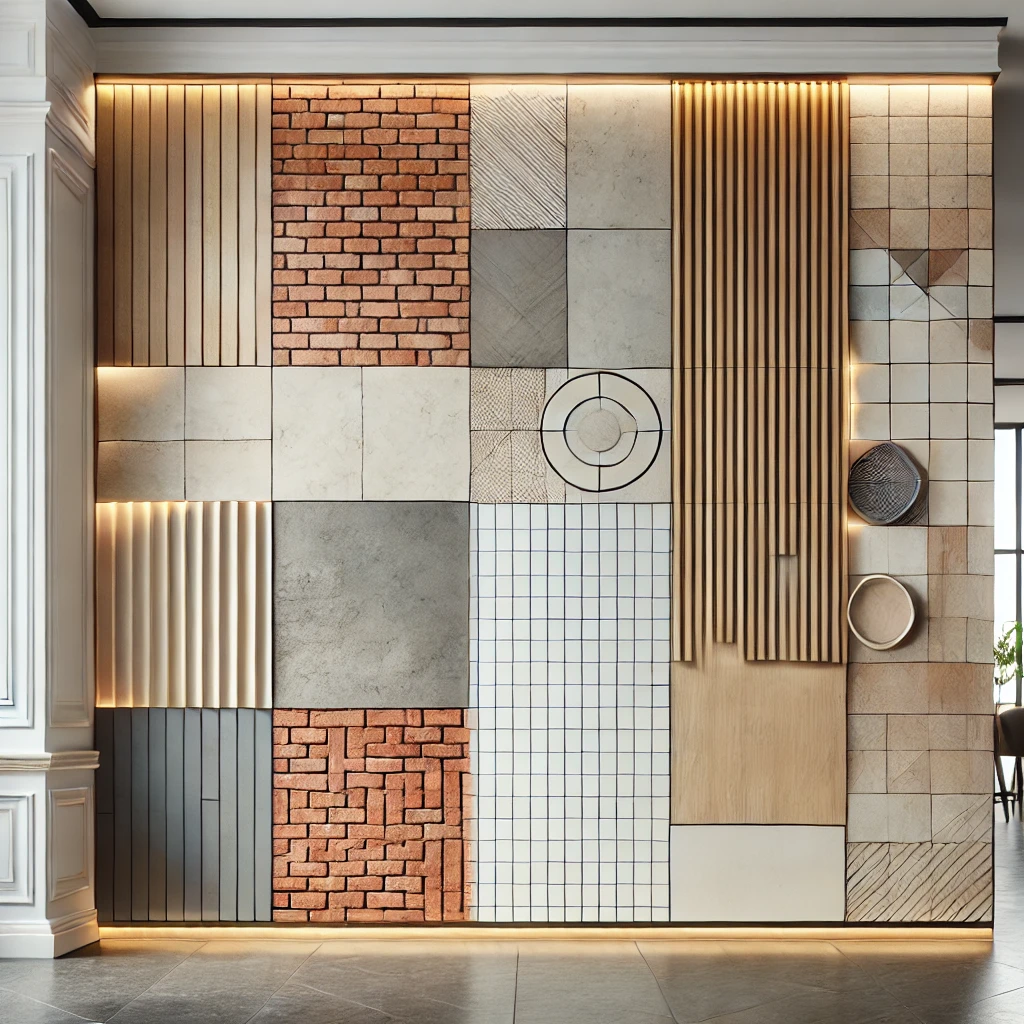Your cart is currently empty!
“How to Choose the Right Material for Your Wall?”

How to Choose the Right Material for Your Wall?
How to Choose the Right Material for Your Wall? This is essential for both functionality and aesthetics. Walls are a defining feature of any space, so selecting the appropriate material ensures durability, ease of maintenance, and alignment with your design goals. Here’s a comprehensive guide to help you make the right choice:
1. Understand Your Needs
Begin by evaluating the purpose of the space. Is it a high-traffic area like a hallway or living room? Or a more personal, low-activity space like a bedroom? High-traffic spaces may require robust materials like tiles or wood paneling, while aesthetic materials like wallpaper or plaster can work in quieter areas.
2. Consider Wall Types
Each wall type has its own set of advantages and best-use scenarios:
- Drywall: Lightweight, cost-effective, and easy to paint or wallpaper, making it a versatile option for most interiors.
- Plaster: Offers a classic, smooth finish with excellent soundproofing qualities, often used in older homes or for decorative purposes.
- Brick or Stone: Provides a natural, textured look that adds warmth and character. Ideal for feature walls or rustic designs, but it may require sealing in damp areas.
- Concrete: Durable and modern, perfect for industrial designs but needs additional treatments for color and texture.
3. Assess Durability
For areas prone to wear and tear, select materials that stand the test of time. Bathrooms and kitchens, for instance, benefit from moisture-resistant options like:
- Ceramic Tiles: Water-resistant, easy to clean, and available in various designs.
- Vinyl Panels: Durable, waterproof, and low-maintenance.
- Treated Wood: Offers a warm aesthetic but requires proper sealing for moisture resistance.
4. Prioritize Maintenance
Different materials require varying levels of upkeep. Opt for easy-to-maintain options if you’re looking for convenience. For example:
- Washable Wallpaper: Perfect for families with kids, as it can be easily cleaned.
- Paint with Washable Finish: Enables effortless removal of stains and marks.
- Laminate Panels: Highly resistant to scratches and stains.
5. Emphasize Aesthetics
Your wall material should enhance the overall design of your space. Consider these aesthetic options:
- Wood Paneling: Adds warmth and a natural feel to your interiors.
- Metal Sheets: Great for industrial or contemporary styles.
- Textured Panels: Provide depth and a luxurious touch to your walls.
- Wallpaper: Offers unlimited patterns, colors, and textures for a personalized look.
6. Budget Wisely
Factor in not just the cost of materials but also installation and long-term maintenance. While materials like plaster or stone may have a higher upfront cost, they tend to last longer and reduce maintenance expenses over time.
7. Environmental Factors
If sustainability is a priority, explore eco-friendly materials like:
- Bamboo Panels: A renewable and stylish option.
- Recycled Wood: Great for adding a rustic touch while being environmentally responsible.
- VOC-Free Paint: Reduces indoor air pollution.
8. Test Before Committing
Always test samples of your chosen material in your space. Observe how it looks under natural and artificial lighting and ensure it complements your overall design scheme.
Final Thoughts
Selecting the right material for your walls requires a balance between practicality, aesthetics, and budget. By considering the room’s purpose, maintenance requirements, and your personal style, you can make an informed choice that elevates your space both functionally and visually. Remember, your walls are more than just barriers—they’re a canvas for your creativity!

Leave a Reply